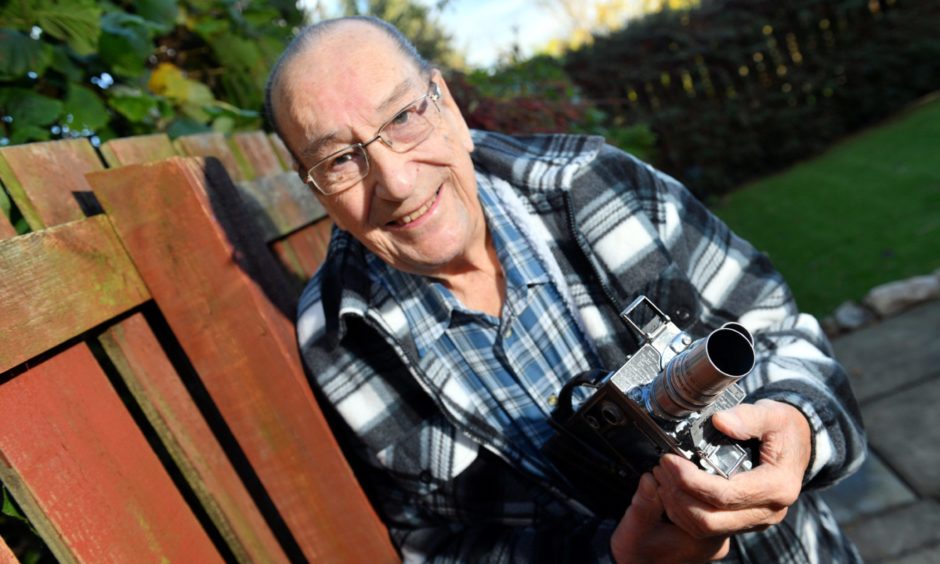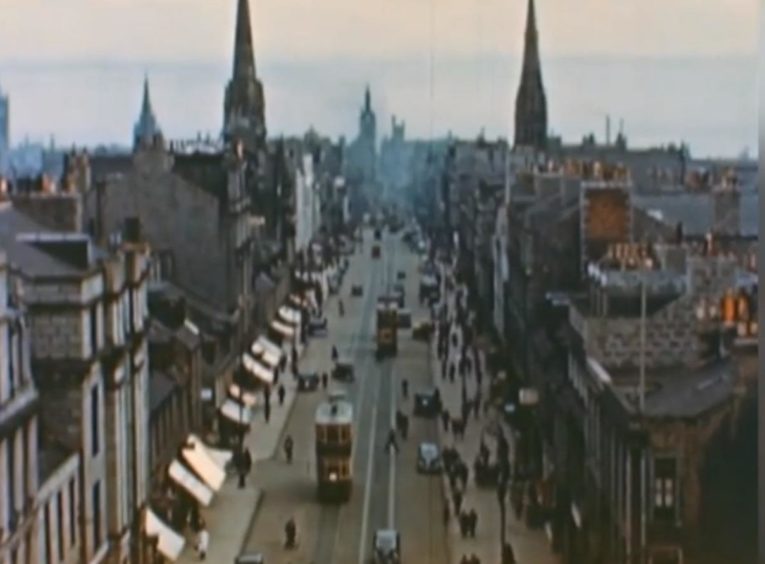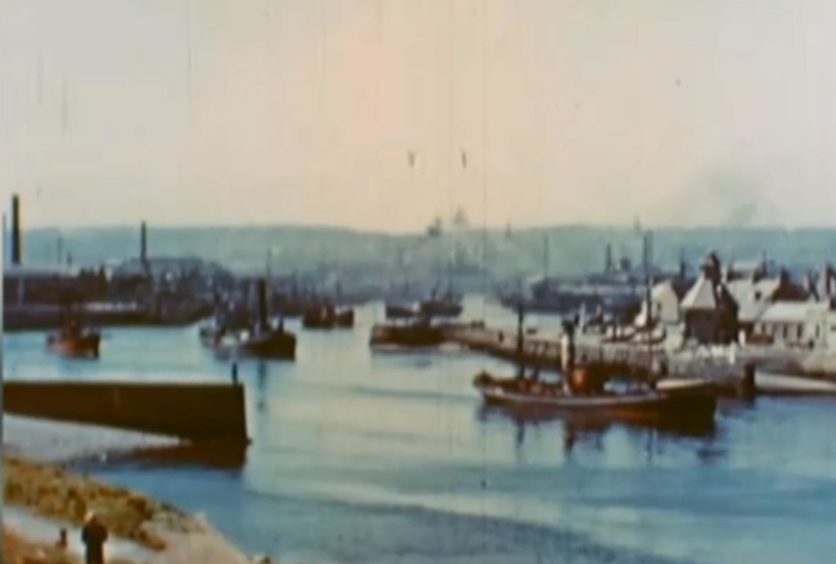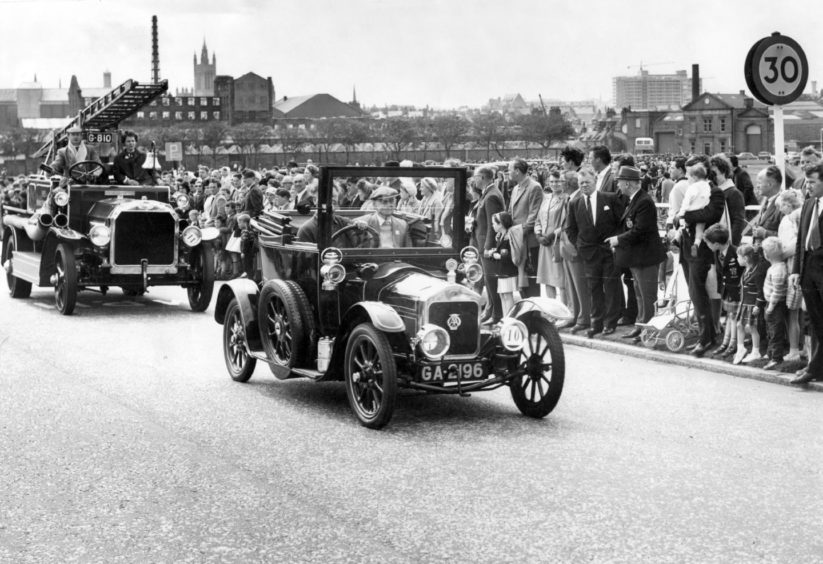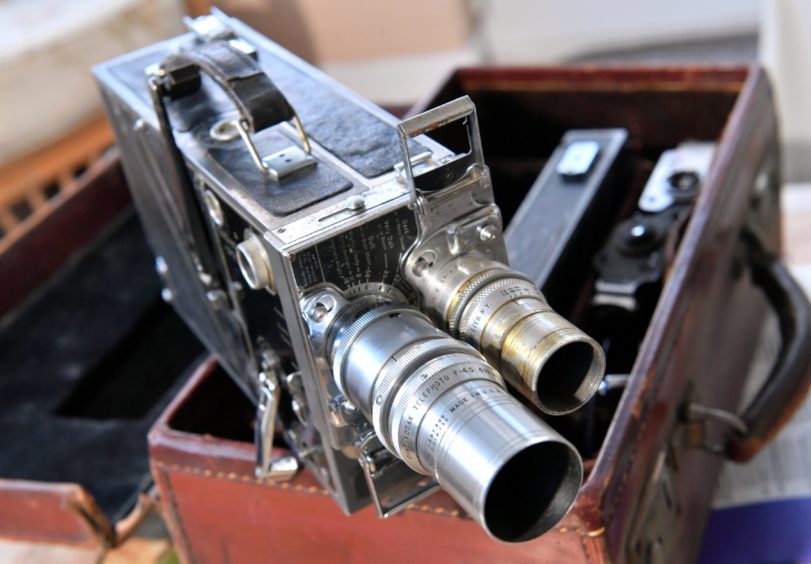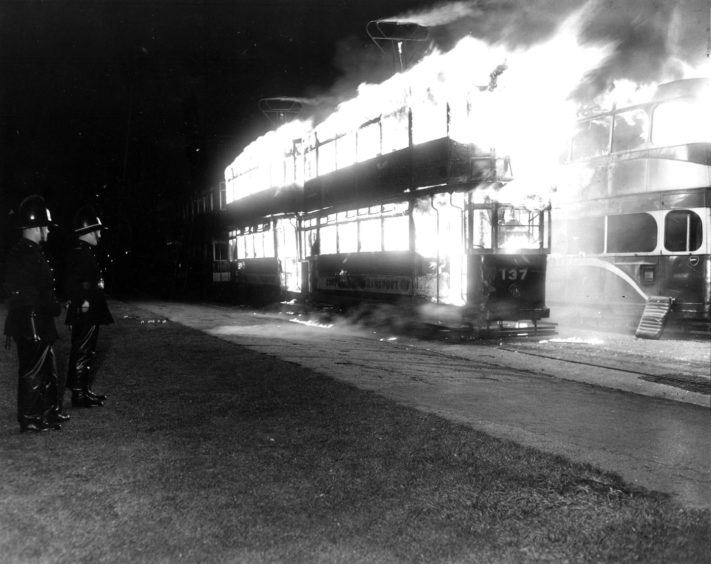Long gone days of Aberdeen are being seen again for the first time in decades, as a hidden treasure trove of old cine film gives a fascinating glimpse into the Granite City’s past.
The collection of old movies are being released online by Alan Stott, who with a band of fellow cine film enthusiasts made their own films from the 50s through to the 70s.
One of the shorts posted on Alan’s Facebook page shows the delights of Aberdeen as a tourist destination in the 30s – and was made by Alan’s father, Laurence, who ran the photographic dealers, James. E. Henderson, on Union Street.
“He was a great promoter of home movie in the 1920s and my family films go back to when I was three months old,” said Alan, who became managing director of Henderson’s in 1949, after the death of his father.
Lovely film
His dad’s 20-minute film, titled The Granite City, dates from 1936. It shows trams and buses on Union Street, a sun-dappled Union Terrace Gardens, bowling greens by the side of the Dee, a packed Aberdeen Beach – complete with Punch and Judy show – and even a working Rubislaw Quarry.
“As far as I know, it was made for the Scottish Film Council and it was used to promote Aberdeen, I think at a world fair in America. That’s what I was led to believe,” said Alan.
“There are not a lot of colour films of Aberdeen from that period,” he said.
“It’s a lovely film. I think it is wonderful. Up in my loft, I still have the camera that made it, a Cine Kodak Special.”
The Granite City has also proved to be enormously popular with modern audiences, garnering more than 68,000 views on Facebook, said Alan, who retired in 1991 and now lives in Kingswells.
“I’m completely shattered by that. I can’t believe that so many people have seen that film. That’s a hell of an audience.”
Other films being posted by Alan include a series he and his cine enthusiast friends made.
All the rage
“From the age of about 10 or 12, my father taught me how to shoot film and I have been doing it ever since. In the early 1950s, I formed Aberdeen District Cine Club. They were all the rage at that time, all over Britain,” said Alan.
“We got together every week to chat about film. A group of us, all working in the largest format of 16mm, formed ourselves into a little group and called ourselves the Clansmen.”
The enthusiasts made about 25 films in total, looking at different aspects of life in the north-east.
“We did things we thought were of local interest,” said Alan. “We did the work of Aberdeen Amateur Radio Society, we did carting out at Crimond, we filmed Ingasetter’s lavender oil production at Banchory. We also did the first Kildrummy Rally around 1960.
Video killed cine stars
“We kept that going up until the 70s, when it died off. At that time video was just starting and people were giving up movies and going on to look at video. I could never cope with video. I just don’t understand it. I like to get my hands on pieces of film. I can do something with them.”
One of the films Alan has posted is about the last line fisherman working out of Collieston in 1961.
“That was a solo effort, because we had a cottage there and I did that for myself. It was just super. He was a great guy. He was the last line fisherman on the north-east coast, I think. They are all long since gone.”
Another film made by the Clansmen follows an enthusiast as he restores a vintage car.
“We spent our winter evenings out at his workshop, filming the restoration of a vintage car. It was something slightly different as we actually spent a couple of nights just interviewing and recording his conversation. We used part of that to provide commentary for the film. It was a slightly different way of doing it for us.”
Alan said that all of his and the Clansmen’s films are now stored by the Scottish Screen Archive of the National Library of Scotland, but he has decided to start sharing them online.
More to be posted
“I’m 94 and I have something to do that makes life interesting,” said Alan. “It’s lovely to get them seen and it has given me a lot of pleasure to see the number of people who are watching them. That’s good.”
Alan said there are many more films to be posted online.
“There’s a lovely one made my one of my group of Johnston Gardens, that was again in the 50s,” he said. “The same guy directed the filming of the last tram in Aberdeen and the blaze down at the Beach Boulevard.
“For Christmas I have a little five minute on called Christmas In Lights. That will be coming out in December.”
You can see more vintage cine on Alan’s Facebook page at www.facebook.com/alanstott86
